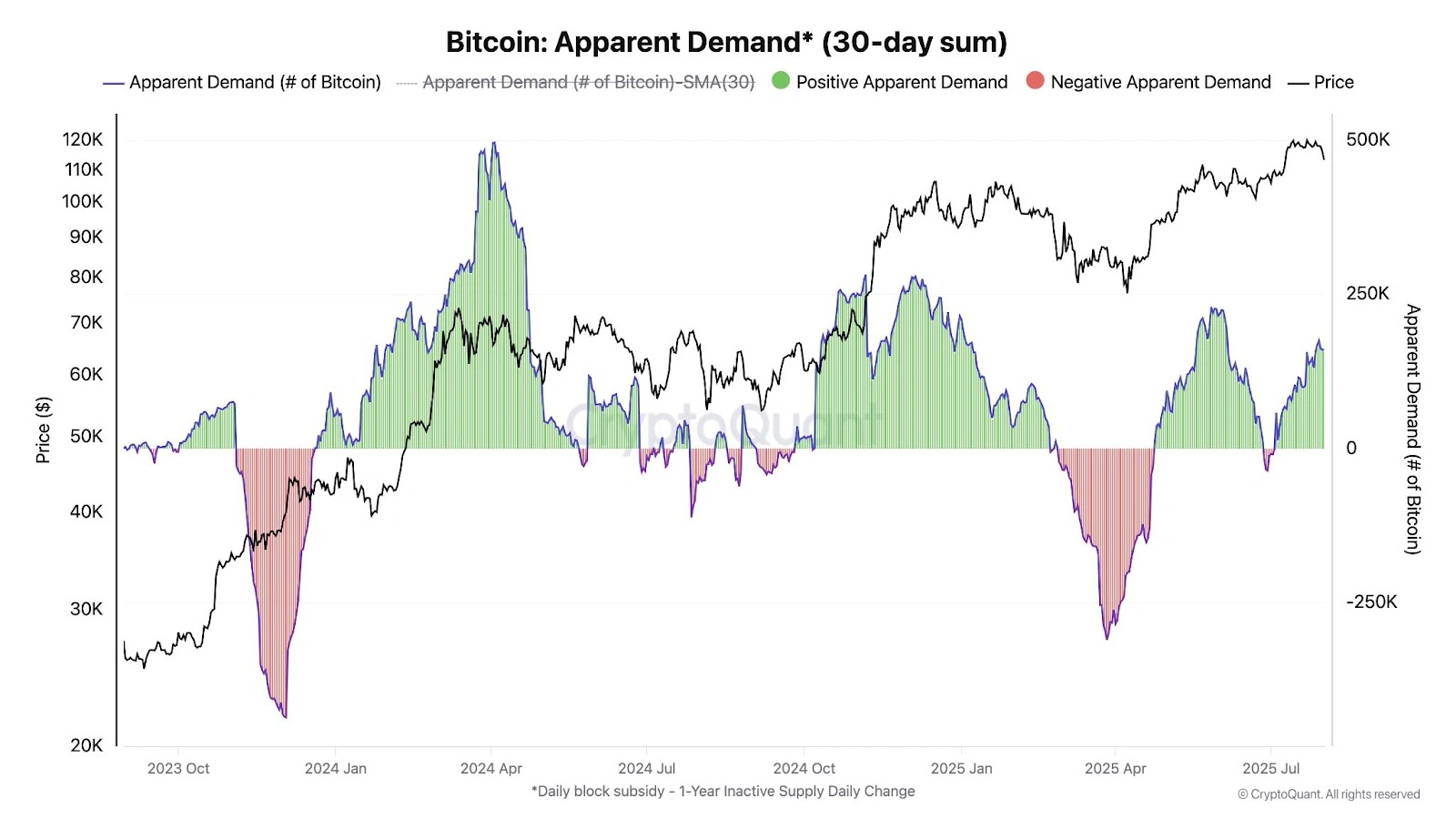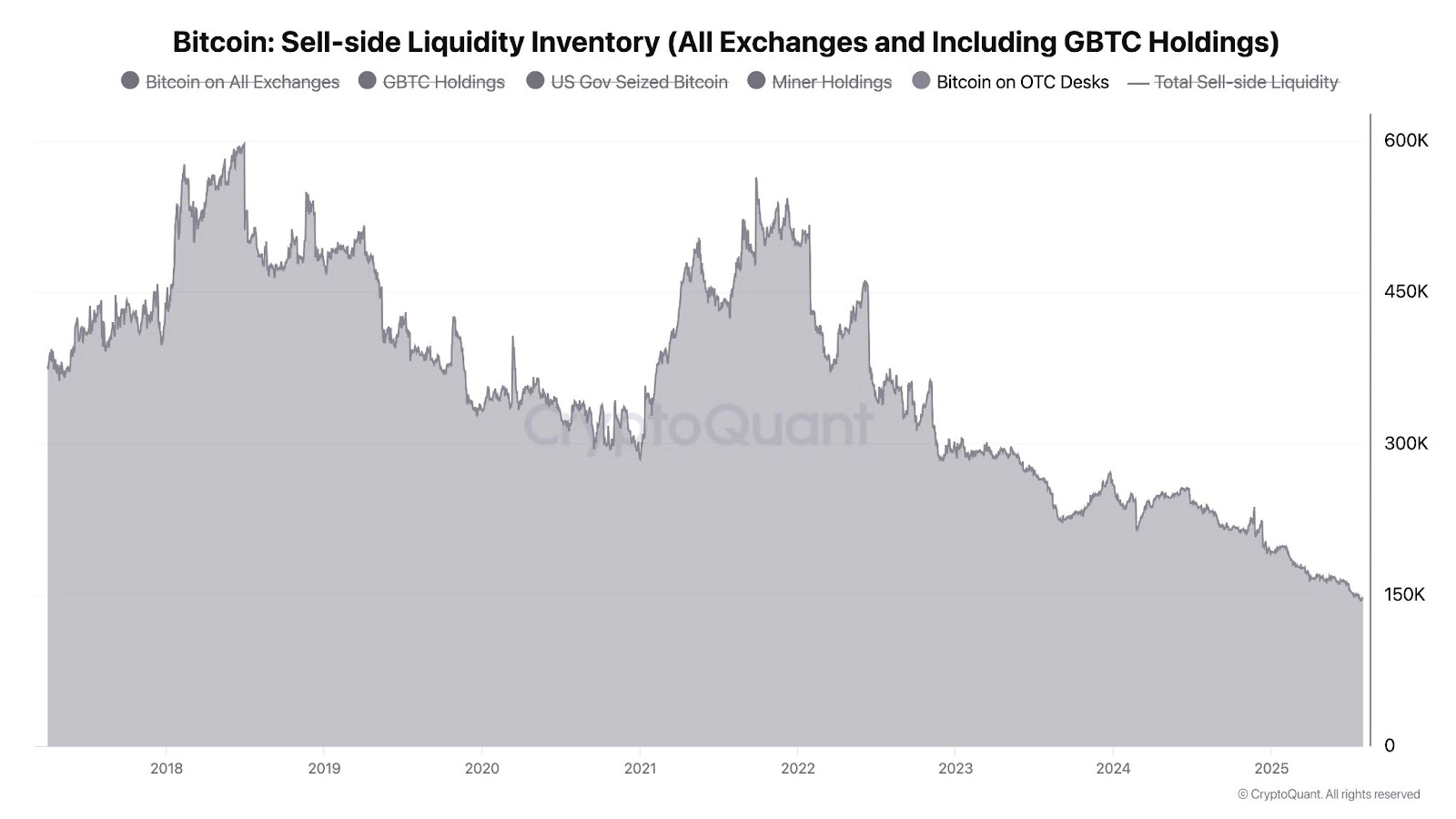Bitcoin may be slightly down from its recent highs, but on-chain data shows that the leading cryptocurrency remains on solid footing.
According to analysis by CryptoQuant technical analysts, overall investor appetite for BTC is still intact, even as short-term holders appear increasingly nervous thanks to the recent price volatility.
However, while the report indicates that long-term conviction remains high, market observers warn that short-term pressure could bring unwanted turbulence, a sentiment that BitMEX founder Arthur Hayes shares, as Cryptopolitan previously reported .
Apparent Bitcoin demand shows long-term confidence
CryptoQuant’s latest data points to the “apparent demand”—a metric that compares newly issued Bitcoin with the supply that’s been inactive for over a year. The goal is to identify whether new demand is strong enough to absorb the ongoing supply.
Right now, the signal remains firmly positive, with more than 160,000 BTC reportedly accumulated in the past 30 days. That level of net accumulation suggests that longer-term participants are still stepping in, even as market prices dip.
 BTC apparent demand chart. Source: Cryptoquant
BTC apparent demand chart. Source: Cryptoquant
Perhaps even more telling is the behavior of accumulator addresses, wallets that have a clean track record of only buying, never selling. Over the past month, these addresses have added roughly 50,000 BTC to their holdings.
 BTC demand from accumulation addresses. Source: Cryptoquant
BTC demand from accumulation addresses. Source: Cryptoquant
Beyond wallet behavior, the long-term demand story is also visible in off-chain markets. The amount of BTC held by OTC (over-the-counter) desks has declined drastically since late 2021.
At that time, OTC desks held around 550,000 BTC. Today, that number is closer to 145,000. While OTC markets are less impactful on short-term price action, their steady drawdown points to continued institutional accumulation and a tightening of the available Bitcoin supply .
 BTC volume held in OTC desk reserves. Source: Cryptoquant
BTC volume held in OTC desk reserves. Source: Cryptoquant
Short-term holders show signs of stress
While long-term holders are holding firm, short-term holders (STHs) tell a different story. CryptoQuant analysts are closely watching this group as a potential risk factor for further downside volatility.
STH investors typically enter positions during market rallies and are the first to sell when momentum fades. With Bitcoin slipping from recent highs, many short-term holders are now facing unrealized losses.
Using the Net Unrealized Profit/Loss (NUPL) metric, analysts show that long-term holders remain in healthy profit territory, with NUPL above 0.5. But for short-term holders, NUPL is much closer to breakeven levels and “fluctuating near lower profit levels, indicating partial selling or short-term pressure during price rallies.”
This dynamic can have ripple effects. When short-term holders begin to capitulate, it creates short-term sell pressure, as seen when the price of BTC fell to $112,000, its lowest in three weeks.
Despite these short-term jitters, analysts remain cautiously optimistic about Bitcoin’s trajectory. The long-term trend still leans bullish, and this time around, it is backed by structural supply constraints and unwavering demand from high-conviction holders. But cracks are beginning to show in the short-term metrics.
Still, the overall outlook remains favorable. The data suggest that Bitcoin’s recent decline is more likely a mid-cycle correction than the end of the bull run.
Get seen where it counts. Advertise in Cryptopolitan Research and reach crypto’s sharpest investors and builders.




